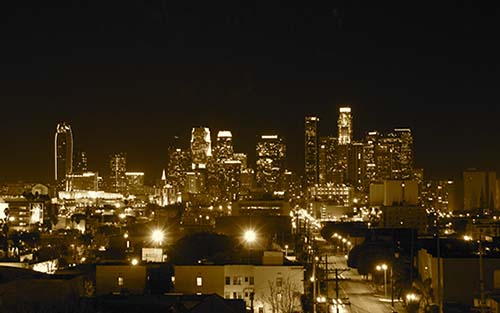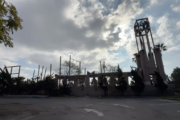California is a paradox. While it is known as one of the most progressive states in the country, home to the entertainment industry and innovative technology companies, it has also produced conservative— even reactionary— counter-movements. For example, California’s Proposition 13 ignited the property tax revolt of the 1970s and the nativist sentiments of the early 1990s resulted in Proposition 187, which aimed to restrict immigrant access to public resources, such as education and health care. And, in 2008, Californians passed Proposition 8, which created a state constitutional amendment that effectively outlawed gay marriage.
This paradoxical identity is mirrored in the religious landscape of the state. Given its reputation as the center for the “secular” pursuits provided by the entertainment and recreational industries, most people might be surprised to know that California has a vigorous religious presence that has actually increased over the last 30 years. According to the decennial Religious Congregations and Membership Study, there are currently 23,558 religious congregations in the state, which claim a total of 16,765,751 adherents, or 45 percent of the population. Since 1980, the number of religious congregations has grown by 3,416 congregations and 5,874,853 adherents, an increase of religious adherents of approximately 10 percent from 34.5 to 45 percent. And, while California lags behind the national numbers of adherents (as a percentage of total population) by almost 4 percent, the national trend in religious adherents has been declining since 1980. Californians are also busy putting their faith and values to work through faith-based nonprofit organizations. According to the National Center for Charitable Statistics, California has 27,576 “religion related” nonprofits—the most of any state by approximately 8,500 organizations—accounting for 17 percent of all registered nonprofits in the state.
Yet, likely due to its independent nature, California has much less of a religious establishment than any other state in the West, and than all other regions of the U.S. This may be one reason why there is so much religious experimentation here—more freedom from institutional hierarchies allows for independence and creativity in religious expression and belief. Of course there are more traditional religious expressions in churches, synagogues, temples, and mosques, but these are often independent or minimally associated with some larger religious governing body. (According to the Pew Religious Landscape survey, Californians are more likely to belong to independent “nondenominational evangelical” congregations than any other region of the country.) And, despite the number of religious congregations and adherents in California, the Pew Religious Landscape survey also shows that as compared to other parts of the U.S., Californians are less likely to believe in a God who is a personal being, less likely to believe in either heaven or hell as real places, and is generally ahead of the trend of “religious nones,” that is, those who have no institutional religious affiliation, having a greater percentage of its population identify as having “no religion in particular. ”
So how can we make sense of the contradictory state of California, and what, if anything might California tell us about larger trends that are taking place in other cities across the U.S.? In order to make a start at answering these questions, Diane Winston and I organized a new CRCC working group this past fall. The “Religion, Politics and Culture in southern California working group” is comprised of over 30 scholars from 15 different colleges and universities throughout southern California. Over three meetings this fall, we have discussed and modified three primary starting points.
First, southern California is one of the most diverse regions in the U.S., with representation from a broad range of racial and ethnic groups, immigrants from almost every country in the world, and religious expressions to match. This provides for many interesting and important opportunities to understand how race, religion, politics and culture interact with each other.
Second, religion in southern California is about more than services in churches, temples, and masjids. Religious groups in southern California have always been active in civic and political movements in the region, in both conservative and progressive causes. Understanding both the historical background and shifting grounds of these alignments is a key aspect of our efforts.
Finally, as we attempt to explain how religion, politics and culture “works” in southern California, our interest extends beyond simply analyzing different religio-political movements in the Southland, to linking what we are finding here to similar changes taking place in other regions of the country. Our working group colleague, Los Angeles historian Mark Wild has argued, we are not only interested in the unique or unusual characteristics of southern California, or in arguing for some sort of California exceptionalism. Rather, our intent is also to identify those characteristics that may be broadly comparable to other regions of the U.S., whether because they reveal similar patterns, or perhaps shared networks that link southern California with other parts of the country.
Can our analysis of California’s religious, political, and cultural landscape help us to understand what is happening in southern California and broader patterns in American society? We think so, but our work is only beginning, and we have a long way to go. Our goal is to start developing new projects, presentations and publications that detail our work. We’ll keep you posted as to our progress.
Richard Flory is the executive director of the USC Center for Religion and Civic Culture.






